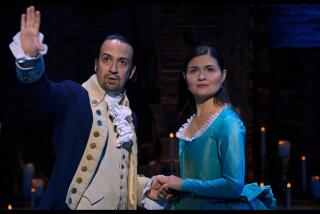Don’t let ‘Go Set a Watchman’ change the way you think about Atticus Finch: How his character evolved
Let me play devil’s advocate for a moment: Why should the revelations in “Go Set a Watchman” -- most notably, its portrait of Atticus Finch as a segregationist -- change the way we think about Harper Lee’s “To Kill a Mockingbird”?
“Go Set a Watchman,” after all, is not a sequel to the original novel, which won the 1961 Pulitzer Prize for fiction and has been a staple of junior high and high school reading lists for more than half a century. It is a first draft, a glimpse at a work in progress, a signpost along the road from there to here.
The book isn’t on sale until Tuesday, but already social media are abuzz with mourning over Atticus. These laments wonder: How did the moral center of “To Kill a Mockingbird” become a racist? -- when in fact it’s the other way around.
MORE: 23 fiction books you’ll want to read -- and share -- this summer
“Go Set a Watchman” came first, remember; it is the place where Atticus begins. In that sense, the question we ought to be asking is how the character evolved in Lee’s imagination, and what this means for the process of her storytelling.
A July 11 article in the Wall Street Journal reminds us that Atticus was inspired by the author’s father, Amasa Coleman Lee, who changed his views on segregation around the time his daughter was reworking “Go Set a Watchman” into “To Kill a Mockingbird.” This may help explain the character’s development.
Either way, Atticus did not betray anything, least of all his principles; instead, this character became increasingly enlightened over time.
So why the uproar? In part, it has to do with the book’s publisher, HarperCollins. Since “Go Set a Watchman” was announced in February, it has presented the book as an autonomous work. “After ‘To Kill a Mockingbird’ was published by J.B. Lippincott in 1960,” the publisher declared in a news release, “Harper Lee set aside ‘Go Set a Watchman’ and never returned to it.”
Even more, I think, is a confusion over what a book or author owes us, which has been especially prevalent in regard to “To Kill a Mockingbird.”
The novel has been called an American classic, a work that helped catalyze a nation’s thinking about segregation and race. That may be true, but it was, first, the expression of a single writer’s vision, and it is that and only that to which Lee has responsibility.
The Atticus of “To Kill a Mockingbird” was an icon, an archetype, a figure out of myth. This is the appeal of the book, which owes its success to a stark delineation of good and evil, Atticus and the woefully mistreated Tom Robinson on the one side and the Ewells on the other, with the townspeople of Maycomb -- a stand-in for Lee’s hometown of Monroeville, Ala. -- arrayed along the shifting precipice between.
“Simply because we were licked a hundred years before we started is no reason for us not to try to win,” Atticus explains after Tom, a black man, is convicted by an all-white jury of a rape he didn’t commit. The implication is that moral victory may be all we can hope for, that in a fallen world, sometimes we can only persevere.
That’s accurate enough, I suppose, but what of Atticus’ frustrations, his inconsistencies? What about his biases, his contradictions, the inclinations he can’t reconcile? This is why I have no use for likeability as a literary standard, because likeability has nothing to do with who and what we are.
The point of fiction -- or naturalistic fiction, anyway -- is not moral edification. It is not to portray the world as we wish it were, but rather as it is. And the hard truth is that a man such as Atticus, born barely a decade after Reconstruction to a family of Southern gentry, would have had a complicated and tortuous history with race. That this doesn’t emerge in “To Kill a Mockingbird,” then, may be one of that book’s failings, a tendency to sugarcoat, to oversimplify.
The Atticus in “Go Set a Watchman,” in other words, is likely closer to the way such a man would actually have been.
Something similar is true of Scout, called in the new book by her given name Jean Louise, who is critical of the decision in Brown vs. the Board of Education of Topeka, believing the Supreme Court has overreached.
Summer reading guide: The 136 books you’ll want to read
That she can make such a judgment, while still supporting racial equality against her father’s tired and offensive rationalizations, is the mark of what I look for in a character: a state of complex and contrary humanity.
What does it mean when a person we admire, whether real or fictional, espouses views we find reprehensible? What is the conversation it provokes?
The answer, I’d suggest, is that it offers us an opportunity: to decide, to take responsibility -- which is also what it offers to the character. In that sense, what seems remarkable is not that Atticus was once a supporter of segregation and state’s rights but that in the transition from “Go Set a Watchman” to “To Kill a Mockingbird,” his worldview (as well, perhaps, as that of his creator) became irrevocably, and unexpectedly, enlarged.
Twitter: @davidulin
More to Read
The biggest entertainment stories
Get our big stories about Hollywood, film, television, music, arts, culture and more right in your inbox as soon as they publish.
You may occasionally receive promotional content from the Los Angeles Times.











